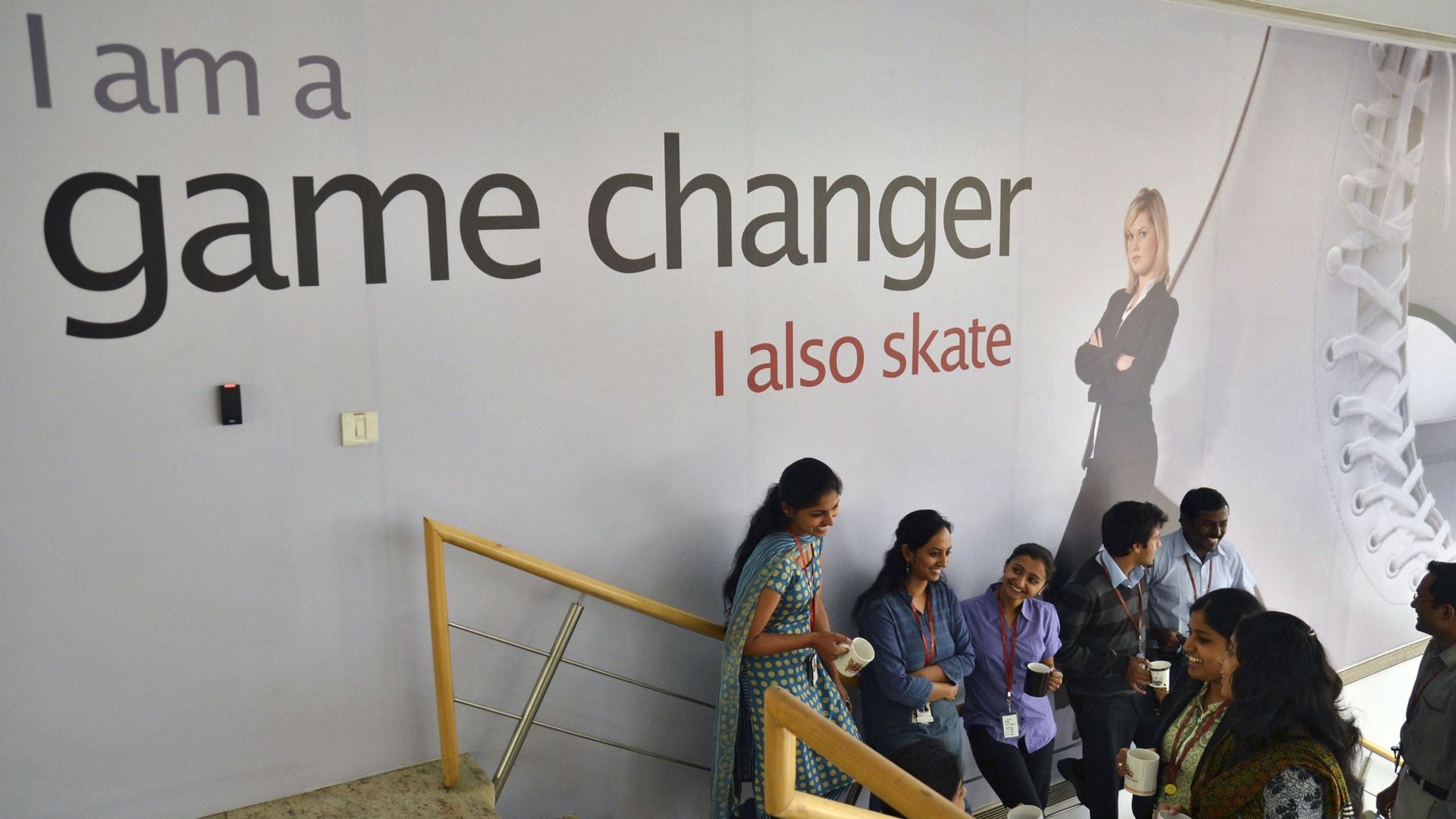Indian IT sector is a boy’s club—but there’s reason to believe it’ll soon change
This originally appeared on LinkedIn. You can follow Vivek Wadhwa here.


This originally appeared on LinkedIn. You can follow Vivek Wadhwa here.
“When I moved to Silicon Valley from Pakistan, I did not expect that people would be so surprised my co-founder Sabika Nazim is a woman,” said Faizan Buzdar, CEO of Convo. He was also in disbelief at the public battles I have had to fight with Silicon Valley moguls over their lack of gender diversity.
I had been researching the success of Indians in Silicon Valley and documented that this group, which constitutes 6% of the working population, started 15.5% of its companies. This is an amazing feat, given the disadvantages that immigrants always have.
I had considered Silicon Valley to be the perfect meritocracy—until I moved there. I was surprised to learn that there is a powerful boys’ club that provides arrogant young males with adulation, funding, and support. This might be tolerable if, as some people say they do, women lacked aptitude for technology. But the opposite is true. Women are in many ways better than men; their exclusion is holding back innovation and economic growth.
Few, if any, of the executive teams of top firms have women as technology heads. Virtually all of Silicon Valley’s investment firms are male-dominated. The boards are even worse. Twitter, for example, didn’t have a single woman board member went it went public last October. When I expressed my disgust at this in the New York Times, its CEO Dick Costolo ridiculed my academic credentials. Fortunately, there was so much outrage at his unprofessionalism and insularity that he had to back down and add a woman board member.
Companies with the highest proportions of women board directors outperform those with the lowest proportions by 53%. They have a 42% higher return on sales and a 66% higher return on invested capital. As well, a board that reflects a company’s user base is more likely to understand the company’s market needs and to develop better strategies. Take Twitter, the majority of whose users are women. Being a boys’ club has been costly to its shareholders, as evidenced by its dismal post-IPO performance.
Silicon Valley’s greatest strength is that it accepts failure—including its own. It also encourages dissension and learns from its mistakes. I have received strong support in my battles and have had more than 500 women help me “crowd-create” a book titled Innovating Women, which shares lessons and encourages women to help better the world. This book will be released in September.
Technology companies have been reeling from the criticism about their gender gap and are working towards reducing it. Just in the past few weeks, Google, LinkedIn, Yahoo, and Facebook have all released gender-diversity data. The numbers are not good, with the female percentage in engineering being in the teens. But the companies have admitted the problem and are now holding themselves accountable.
Indian boards are no better. The majority of publicly traded Indian companies—922 of 1,462—have no women on their boards. Women hold barely 5% of board seats in India, in comparison with 17% in the United States. Indian industry too is needlessly holding itself back.
Indian IT companies have a bigger management problem. Look at the executive ranks of Infosys, Wipro, TCS, Tech Mahindra, and the others, and you will hardly find any women. This is surely hurting Indian IT.
But there is good news at the lower ranks. Unlike in the US, where, because of the boys’ club, the proportion of women studying computer science fell from 37% in 1987 to 17% in 2012, India’s numbers of female IT students are increasing. According to NASSCOM, IT. Services gender-diversity ranges from 24-32%; in BPM this is 34-42%; 1 million of India’s 3.1 million IT workforce is female; and women now represent 38 to 40% of entry-level recruits.
This will give India a major advantage in the future.
An assortment of technologies is advancing at exponential rates and converging—in fields such as robotics, artificial intelligence (AI), computing, synthetic biology, 3D printing, medicine, and nanomaterials. These advances are making it possible for entrepreneurs to solve humanity’s grand challenges—including energy, education, water, food, and health.
In these rapidly evolving fields, the boys—who dominated technology in the social-media era—have no advantage. Those with experience and education—in fields as diverse as science, technology, engineering, education, health sciences, and arts and humanities—have the edge, because they can work across disciplines and see the big picture. Women dominate many of these fields, and they match boys in mathematical achievement. And if you combine a cross-disciplinary education with a woman’s maternal instinct, empathy, and a desire to do good, you have an unbeatable combination. That’s why women entrepreneurs are best placed to solve humanity’s grand challenges—and to save the world. And that’s why it’s important to teach and inspire them.